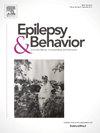Drug repurposing in status epilepticus
IF 2.3
3区 医学
Q2 BEHAVIORAL SCIENCES
引用次数: 0
Abstract
The treatment of status epilepticus (SE) has changed little in the last 20 years, largely because of the high risks and costs of new drug development for SE. Moreover, SE poses specific challenges to drug development, such as patient diversity, logistical hurdles, and the need for acute treatment strategies that differ from chronic seizure prevention. This has reduced the appetite of industry to develop new drugs in this area. Drug repurposing is an attractive approach to address this unmet need. It offers significant advantages, including reduced development time, lower costs, and higher success rates, compared to novel drug development.
Here I demonstrate how novel methods integrating biological knowledge and computational methods can be applied to drug repurposing in status epilepticus. Biological approaches focus on addressing mechanisms underlying drug resistance in SE (using for example ketamine, tacrolimus and safinamide) and longer-term consequences (using for example omaveloxolone, celecoxib and losartan). Additionally, artificial intelligence platforms, such as ChatGPT, can rapidly generate promising drug lists, while in silico methods can analyze gene expression changes to predict molecular targets. Combining AI and in silico approaches has identified several candidate drugs, including metformin, sirolimus and riluzole, for SE treatment. Despite the promise of repurposing, challenges remain, such as intellectual property issues and regulatory barriers. Nonetheless, drug repurposing presents a viable solution to the high costs and slow progress of traditional drug development for SE.
This paper is based on a presentation made at the 9th London-Innsbruck Colloquium on Status Epilepticus and Acute Seizures, in April 2024.
癫痫状态下的药物再利用。
在过去的 20 年中,癫痫状态(SE)的治疗方法变化不大,这主要是因为针对 SE 的新药开发风险高、成本高。此外,SE 对药物开发提出了特殊的挑战,如患者的多样性、后勤障碍以及对不同于慢性癫痫发作预防的急性治疗策略的需求。这降低了业界在这一领域开发新药的热情。药物再利用是解决这种未满足需求的一种有吸引力的方法。与新药开发相比,它具有缩短开发时间、降低成本和提高成功率等显著优势。在此,我将展示如何将生物知识与计算方法相结合的新方法应用于癫痫状态的药物再利用。生物方法侧重于解决癫痫状态药物耐药性的潜在机制(例如使用氯胺酮、他克莫司和沙芬胺)和长期后果(例如使用奥马韦洛酮、塞来昔布和洛沙坦)。此外,人工智能平台(如 ChatGPT)可以快速生成有前景的药物列表,而硅学方法则可以分析基因表达变化以预测分子靶点。结合人工智能和硅学方法,已经确定了几种用于 SE 治疗的候选药物,包括二甲双胍、西罗莫司和利鲁唑。尽管再利用前景广阔,但挑战依然存在,如知识产权问题和监管障碍。然而,药物再利用为解决治疗 SE 的传统药物开发成本高、进展慢的问题提供了一个可行的解决方案。本文根据 2024 年 4 月在第九届伦敦-因斯布鲁克状态性癫痫和急性发作研讨会上的发言整理而成。
本文章由计算机程序翻译,如有差异,请以英文原文为准。
求助全文
约1分钟内获得全文
求助全文
来源期刊

Epilepsy & Behavior
医学-行为科学
CiteScore
5.40
自引率
15.40%
发文量
385
审稿时长
43 days
期刊介绍:
Epilepsy & Behavior is the fastest-growing international journal uniquely devoted to the rapid dissemination of the most current information available on the behavioral aspects of seizures and epilepsy.
Epilepsy & Behavior presents original peer-reviewed articles based on laboratory and clinical research. Topics are drawn from a variety of fields, including clinical neurology, neurosurgery, neuropsychiatry, neuropsychology, neurophysiology, neuropharmacology, and neuroimaging.
From September 2012 Epilepsy & Behavior stopped accepting Case Reports for publication in the journal. From this date authors who submit to Epilepsy & Behavior will be offered a transfer or asked to resubmit their Case Reports to its new sister journal, Epilepsy & Behavior Case Reports.
 求助内容:
求助内容: 应助结果提醒方式:
应助结果提醒方式:


